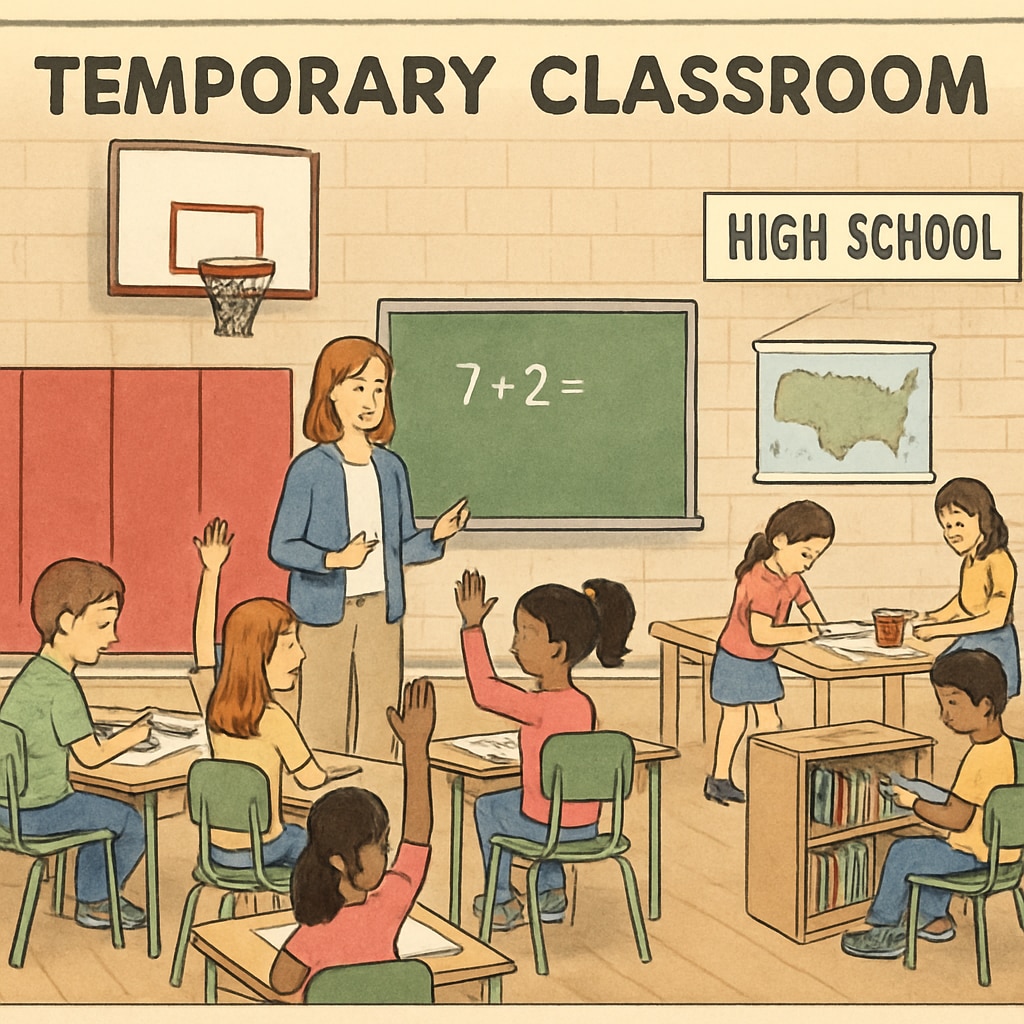Changes in elementary education, school environment, and parental involvement can significantly affect children, especially when their campuses are relocated to temporary facilities. Such transitions—like moving elementary students to high school campuses—introduce unique challenges for young learners. These changes can impact their emotional well-being, academic performance, and social interactions. However, with proactive strategies and strong collaboration between parents and schools, these challenges can be mitigated to help children thrive in their new environments.
How Campus Changes Affect Elementary School Children
Relocation to temporary classrooms—such as placing elementary students in high school facilities—can disrupt a child’s sense of stability and routine. For young learners, familiar surroundings play a critical role in fostering a sense of security. The loss of their known environment can lead to feelings of anxiety, confusion, or even resistance to attending school.
Key challenges faced by children in temporary campuses include:
- Social displacement: Interaction with unfamiliar age groups (such as high schoolers) can be intimidating for younger children.
- Reduced play space: High school campuses may lack the playgrounds and child-friendly facilities necessary for elementary students’ physical and social development.
- Learning environment mismatch: High school classrooms may not be designed for younger students’ needs, affecting their focus and engagement.
While these challenges may initially seem overwhelming, they offer an opportunity for growth and adaptation when addressed thoughtfully.

Creating a Supportive Environment Through Parental Involvement
Parental involvement is key to helping children adapt during times of change. Parents act as a bridge between the school and home, ensuring children feel supported both emotionally and academically. In these transitional phases, open communication and proactive engagement can make all the difference.
Here are some strategies for parents to support their children:
- Maintain routines: Establishing consistent daily routines can provide children with a sense of stability, even in unfamiliar environments.
- Foster open communication: Encourage children to share their feelings about the new campus and listen to their concerns without judgment.
- Collaborate with teachers: Regularly check in with teachers to understand how your child is adjusting academically and socially.
- Be involved in school activities: Volunteer for events or join parent-teacher associations to stay connected with the school community.
By actively participating in their child’s educational journey, parents can help bridge the gap between the old and new environments, ensuring a smoother transition.

School Strategies to Support Students During Relocation
While parental involvement is crucial, schools also play a significant role in easing the transition for students. Administrators and educators can implement measures to create a welcoming and adaptable environment for young learners.
Effective strategies include:
- Redesigning spaces: Modify temporary classrooms to better suit younger students, incorporating age-appropriate furniture, colors, and resources.
- Encouraging peer support: Pair older students as mentors or buddies to help younger children feel more comfortable in shared spaces.
- Providing emotional support: Offer counseling services and create opportunities for children to express their feelings through art, storytelling, or group discussions.
- Engaging the community: Partner with parents and local organizations to provide additional resources and extracurricular activities.
Education systems are designed to be adaptable, and with constructive changes, temporary campuses can become nurturing environments that support both academic and personal growth.
Turning Challenges into Opportunities
Transitions like moving to temporary classrooms are inevitable in the evolving landscape of education. However, these changes also present opportunities for children to develop resilience, adaptability, and problem-solving skills. By fostering a collaborative effort between schools and families, we can ensure that students not only overcome these challenges but also grow from them.
Ultimately, a combination of strong parental involvement, thoughtful school strategies, and open communication can transform these transitions into empowering experiences for young learners. As a result, they emerge stronger, more adaptable, and better prepared for future changes in their educational journey.
Readability guidance: Short paragraphs, clear lists, and the use of accessible language ensure readability. Transitions such as “however,” “therefore,” and “in addition” are integrated to connect ideas logically.


